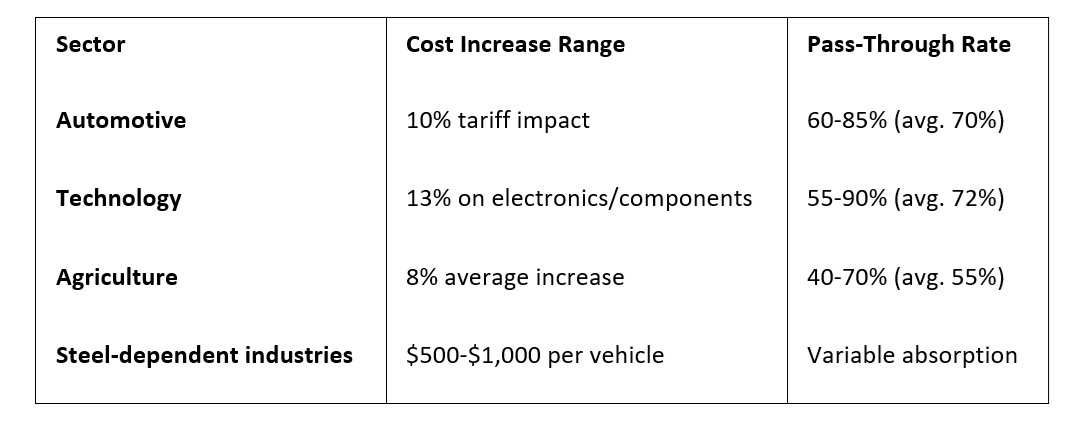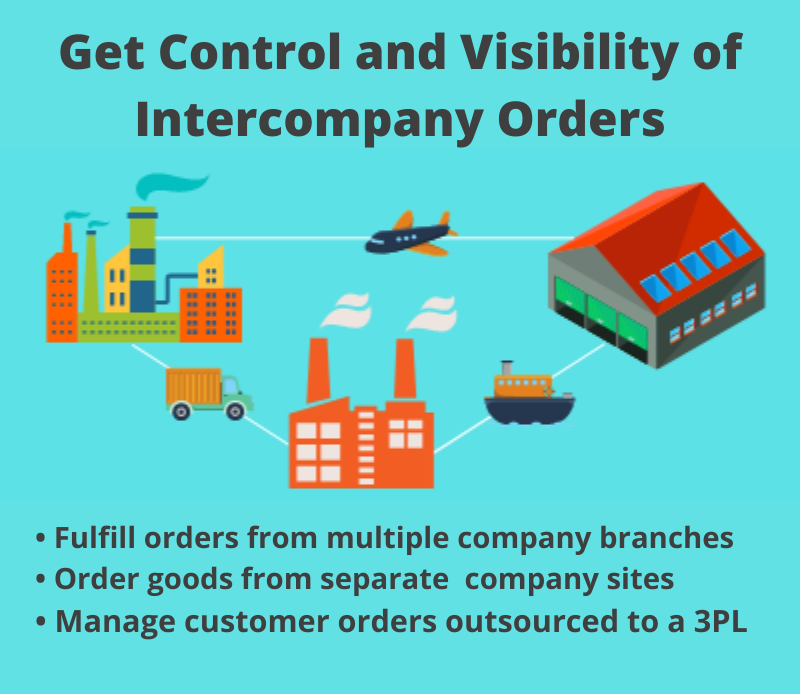 by Don Lindsey
by Don Lindsey
Manufacturers face growing challenges in today’s global market as governments use tariffs to protect domestic industries and influence trade. These tariffs increase input costs, disrupt supply chains, and reduce profit margins, thereby complicating planning and logistics for businesses that source globally.
Understanding tariff types and proactively managing risks is crucial for resilience and competitiveness amid uncertainty. For a detailed explanation of the tariff types, see 7 Types of Tariffs.
Tariffs serve to generate revenue, protect local businesses, influence trade negotiations, and address trade imbalances. Typically, they increase consumer prices and costs for domestic firms that rely on imports, thereby shaping supply chains, market competition, and economies.
Trade policy shifts that alter tariffs raise supply chain costs, disrupt sourcing and logistics, reduce margins, and increase planning uncertainty. This drives manufacturers to redesign networks and enhance agility to maintain resilience. Unprepared manufacturers often face forecasting issues, supplier risks, regulatory complexity, cost management challenges, delays, shortages, and increased operational overhead if strategies are not well thought out and in place.
The Impact of Tariff Changes: What Manufacturers are Facing
Increasing Input Costs
Tariff changes can affect the cost of raw materials and components across many sectors. For example, steel and aluminum tariffs have doubled from 25% to 50%, adding approximately $50 billion in additional tariff costs to users. A recent Daily Upside.com article, Brokers Chafe Under Abrupt Expansion of Steel, Aluminum Tariffs, details the frustration and confusion that one of the latest rounds of tariff changes has caused in the steel and aluminum industries.
These increases directly impact production costs across multiple industries.
- Steel coil prices have risen 5% to 10% for manufacturers, even those not directly importing foreign steel, as domestic producers raise prices due to reduced foreign competition.
- Raw materials in many industries have had cost increases of 12-20%. These increases are typical for manufacturers relying on imported raw materials and components.
- Plastic resin imports have faced 10% tariffs from China and 15% tariffs on petrochemical feedstocks from the Middle East.
Logistics and Transportation
Approximately 60% of U.S. companies have experienced logistics cost increases over the past year. The prudent company has processes in place to track transportation costs and plan for them accordingly. These costs cascade through supply chains in multiple ways.
- Cross-border trucking delays increased by 15% for automotive manufacturers sourcing from Mexico.
- Lead time increases of 10% for some technology products as companies diversify away from China
- Customs complexity escalation requiring additional documentation and inspection processes
Inventory and Working Capital
There are additional pressures on companies that implement cost strategies to mitigate tariff impacts.
- Stockpiling inventories ahead of tariff implementation. This increases working capital requirements.
- Accelerated purchasing as importers increase orders to avoid higher future costs. This can result in increased effort and inventory.
- Supply chain reconfiguration costs will be necessary as companies shift to alternative suppliers, and organizations will need to learn new routes and establish new procedures to accommodate these changes.
Producer Price Index
The Producer Price Index has increased by 0.9% in recent months (annualized to 3.3%), indicating that tariff-driven cost pressures are being passed through the supply chain. This represents price increases at the wholesale level that eventually reach consumers at the retail level.
The expansion of steel and aluminum tariffs to 407 additional product categories affects approximately $320 billion of imports based on 2024 values. Several industries experience severe impact.
- Construction: Higher costs for PVC pipes, insulation, and building materials all contribute to these PPI Increases.
- Automotive: Vehicle costs are estimated to increase by $6,250 due to tariffs on parts crossing borders multiple times
- Food packaging: There are increased costs for canned goods and food containers
Technology Manufacturers
Technology manufacturers, including those in the semiconductor industry, face particularly high increases in input costs.
- 25% tariffs on Chinese components are adding millions to annual production costs for smartphone manufacturers.
- Apple is investing over $1 billion in Indian manufacturing facilities to reduce and avoid tariff exposure.
- Component cost increases for chips, circuit boards, and sensors are being forced on the tech sector.
Working Capital and Cash Flow Impact
- Tariffs impose a cash squeeze, resulting in unanticipated pressures for firms that already operate with slim profit margins.
- Margin compression occurs when companies must decide whether to absorb costs or pass them on to customers.
- Potential wage stagnation or layoffs can result if cost absorption becomes unsustainable.
Sector Vulnerability
Tariff changes can create asymmetric vulnerabilities across economic sectors, with some industries facing existential threats, while others experience minimal disruption.
The level of exposure to a sector depends on several critical factors, including supply chain complexity, import dependency, export concentration, and the ability to substitute inputs or markets.
Factory costs are projected to increase by 2% to 4.5% across manufacturing sectors, with sector-specific variations.

Supply Chain Disruptions
Tariff changes also disrupt supply chains by increasing the costs of imported goods and raw materials, causing supplier shifts and forcing companies to restructure their sourcing strategies for profitability.
Tariff changes create inventory management challenges, including overstocking, shortages, and volatile demand forecasting, which can lead to significant financial losses. Additionally, there are delays and logistical complications to manage, as new trade routes and compliance requirements must be navigated. These uncertainties can strain cash flow, prompt workforce adjustments, and destabilize supplier relationships globally.
Reduced Margins, Investment, and Output
Tariff changes create a cascade of adverse economic effects that systematically reduce corporate margins, discourage investment, and depress output across multiple sectors.
The evidence demonstrates precise transmission mechanisms through which trade barriers undermine business performance and economic growth.
Limited Offset from Domestic Sourcing
Tariff changes designed to promote domestic sourcing reveal significant structural limitations that constrain the effectiveness of these protectionist measures.
While tariffs can push companies to produce more goods at home, many deeper issues—like higher costs and complex supply chains—make it difficult for local sourcing to fill the gap left by pricier imports or disruptions.
As you can see, tariff changes create far-reaching and worldwide economic consequences that extend well beyond the direct costs of trade barriers. Tariff changes impact macroeconomic stability, financial markets, labor markets, consumer welfare, and overall economic growth through multiple channels of transmission and supply chain effects.
Mitigations: Tools for Management and Control
Tariff manipulation causes a multitude of adverse effects on manufacturing organizations. Luckily, QAD ERP has models and analysis sources that offer ways to make the planning and impact of tariff change more manageable and controllable. Let’s consider a few.
Bills of Materials
A Planning Bill of Materials can be applied to combinations of items, categories, harmonized codes, and so on, by anchoring structures to tariff-affected parent items or by grouping items to allow more specific relationships among tariff-impacted elements. This can help determine if changing a product’s materials or removing features is a viable option to avoid high-tariff items.
Forecasting
Quantitative forecasting for tariff impacts is another concrete tool available to the QAD user organizations. This involves using data-driven models and statistical techniques to estimate the effect of changes in tariffs on variables such as trade flows, prices, industry output, GDP, and consumer welfare. This process uses the following methodologies.
Modeling Trade Flows
Quantitative trade models, such as the Global Trade Analysis Project (GTAP), can help simulate the impact of shifts in tariffs on import/export quantities, trade balances, and sectoral outputs.
GTAP models utilize historical trade data, import demand/supply elasticities, and input-output tables to estimate the impacts on trade patterns for each affected sector.
Projections and Regression Analysis
Statistical models, such as local projections or regression analysis, measure how tariffs influence consumer and producer prices over time.
For example, an increase in tariffs can push up prices for specific product categories within the Personal Consumption Expenditure (PCE) index, developed by the U.S. Bureau of Economic Analysis (BEA) to track time-series analysis to forecast inflationary impacts.
Other Models include:
- Descartes CustomsInfo
- SAP Global Trade Services (GTS)
- Flexport Customs
- KlearNow.AI
- Customs4Trade (C4T)
Industry and Sectoral Impact
Planners can aggregate tariffs by product and industry, weighing them according to their share of total imports to estimate an industry’s exposure to new tariffs. The average effective tariff rate, published and analyzed by The Budget Lab at Yale, gives a picture of which sectors may be most vulnerable and how supply chains may be affected by the tariff policy changes.
Dynamic economic models, such as overlapping generations (OLG) or macroeconomic models, are frameworks that represent economies as collections of individuals from different generations (typically “young” and “old”) whose lives and decision-making periods overlap. They use tariff changes as inputs to simulate short-term and long-term effects on GDP, employment, investment, and public revenues. These models are calibrated to both historical trends and microeconomic responses (e.g., changes in sales, capital flow).
QAD Forecasting Techniques
Proper forecasting is the ultimate Tariff Mitigation Tool available to ERP Manufacturing Organizations
The forecasting techniques housed in QAD can use quantitative forecasting techniques that include:
- Time-series analysis of historical sales/trade data.
- Rolling financial forecasts for short-term adaptation.
- Monte-Carlo simulations to test the range of potential outcomes under various tariff scenarios.
![]()
Distributional and Consumer Impact
Distributional analysis leverages data from surveys (e.g., the Consumer Expenditure Survey, https://www.bls.gov/cex/) to forecast how tariffs will affect different income groups and consumer welfare, incorporating both direct price effects and indirect impacts through changes in income and employment.
Limitations and Refinements
Tariff forecasting can be complicated by other external factors, such as exchange rate movements and supply chain adjustments. Models must be updated frequently to incorporate such changes and may use scenario analysis to reflect uncertainty.
Quantitative Forecasting of Tariff Impacts
In practice, quantitatively forecasting tariff impacts involves adding current and projected tariff schedules into QAD, allowing planners to run forecast simulations of the effects on prices, sectoral output, trade flows, and economic growth and to make assumptions about price elasticities. Robust forecasting relies on credible data, accurate calibration, and ongoing adjustment for real-world uncertainties.
Forecasting and Planning Structures
The more you understand and utilize forecasting tools, the better equipped you will be to react to tariff policy changes.
- Scenario planning, which involves modeling various tariff scenarios to predict cost and margin impacts, enables agile decision-making regarding sourcing and pricing.
- Cost simulations with flexible cost structures and overhead categories can be used to analyze the effects of tariffs on landed costs and adjust budgets accordingly.
- AI & machine learning forecasting techniques can anticipate and assist in dealing with demand shifts due to tariff changes.
- Supplier risk assessment ensures a smooth flow of procurement to shipment. Your vendor community needs to understand what is happening within your organization, and suppliers must be absolutely reliable so that forecasting based on alternative supplier options can minimize risks and lead times, thereby mitigating disruptions and tariff-related cost increases.
- Global demand planning that integrates tariff forecasts into multi-echelon demand planning structures can also help proactively manage inventory, supply, and production amidst volatility. QAD’s DynaSys Applications can play a significant role in this process.
Safety Stock
Safety stock is the oldest and most tried-and-true technique for guarding against changes (tariff-induced or not) in a manufacturing plan. Safety stock is extra inventory held as a buffer against fluctuations in supply, demand, and disruptions, including those caused by tariff modifications and international trade issues. It has become a strategic tool for many companies navigating today’s unpredictable trade environment.
Understanding the formulas for Safety Stock, Economic Order Quantity (EOQ), and Reorder Point Theory will set the minimum and optimum values required for changing environments.
Safety Stock is a concrete tool that can assist with navigating the changing tariff environment, ensuring extremely tight communication between you and your vendors.
QAD Demand and Delivery
QAD Demand and Delivery (formerly the Supplier Portal) provides a seamless communication network for QAD users by integrating system prerequisites and ERP components into a single, connected platform. With core functions such as supply chain visibility, document management, supplier performance, communication and alerts, multi-ERP integration, and compliance management, the solution enables organizations to maintain control and agility, even in volatile tariff environments.
Supplier Price Maintenance
Supplier Price Maintenance allows users to swiftly update supplier costs and circumstances to reflect recent tariff increases accurately. This enables real-time cost control, rapid pricing adjustments, and more precise margin management, helping to mitigate the impact of tariffs on profitability.
Global Trade Compliance
The Global Trade Compliance module in QAD helps organizations navigate shifting tariffs and complex international trade requirements with greater efficiency and accuracy. By integrating tools such as Import Management, Free Trade Agreement support, Foreign-Trade Zone management, Restricted Party Screening, and robust compliance analytics, companies can reduce costs while staying compliant with evolving regulations. These capabilities directly improve financial performance through better control of trade spending, more accurate reporting, and stronger forecasting, ultimately enhancing ROI and profitability.
Beyond financial benefits, the module streamlines operations with process automation, claims and deduction management, and real-time visibility into trade activities. These efficiencies minimize errors, reduce risk, and free up resources for more strategic planning and decision-making. At the same time, improved transparency and reliability in global transactions strengthen customer satisfaction and competitive positioning. Together, these advantages transform compliance into a driver of operational excellence and long-term growth.
Other Tariff Mitigation Tools
There are several tools beyond the scope of QAD that are worth mentioning in relation to controlling tariff policy changes.
Reshoring
Reshoring enables firms to mitigate unpredictable tariff impacts and reduce their dependence on foreign suppliers. Still, it can also present many challenges, such as higher domestic labor or input costs, and requires careful consideration of long-term strategic, logistical, and financial factors.
Nearshoring
Nearshoring shifts production closer to core markets (e.g., U.S. firms moving from Asia to Mexico or Canada) to avoid high tariffs, leverage trade agreements, and strengthen supply chain speed and oversight. Agreements like USMCA can reduce costs by granting duty-free access if rules of origin are met.
However, policy changes can extend tariffs to nearshoring hubs, as seen with recent U.S. tariffs on Mexican and Canadian imports. This makes tariff outcomes highly dependent on evolving trade laws and regional restrictions.
To manage these risks, companies must monitor agreements, calculate compliance costs, and build flexibility into operations. Digital forecasting, supply chain diversification, and strong supplier collaboration can help firms navigate volatility. Those who invest in scenario planning and technology will be best positioned to turn trade uncertainty into long-term resilience and a competitive advantage.
In the face of ongoing tariff fluctuations and resulting supply chain disruptions, manufacturers must adopt a blend of strategic foresight, agile planning, and advanced tools to sustain competitiveness and resilience. By leveraging forecasting technologies, comprehensive supply chain visibility platforms, and tactical approaches, organizations can better anticipate and mitigate the cost pressures and operational challenges posed by tariffs. Ultimately, mastering tariff management is not only about minimizing risks but also about transforming uncertainty into a strategic advantage that drives long-term growth and stability in an increasingly complex global trade environment.
All in all, tariffs are one of the most disruptive government policies of recent years. There are literally hundreds of elements to consider and many, many more relationships that need to be understood, identified, tracked, and incorporated into an organization’s pricing and manufacturing policies. Steady experimentation is the key, as this is a totally new challenge for most manufacturing organizations.
Don Lindsey, CFPIM, CIRM, is a knowledgeable Implementation Project Manager, Trainer, and Business Analyst. He has been an implementation manager on several large, complex ERP projects and has worked with ERP systems since 2007 in Manufacturing, Systems Management, Service & Support, and Finance. Don has a diversified background in various manufacturing industries, from Medical to Electronics to Industrial to Consumer Products. He has spoken for many years at the APICS Conferences, having taught in the APIC Certification program at California State University at Fullerton for over 20 years.




